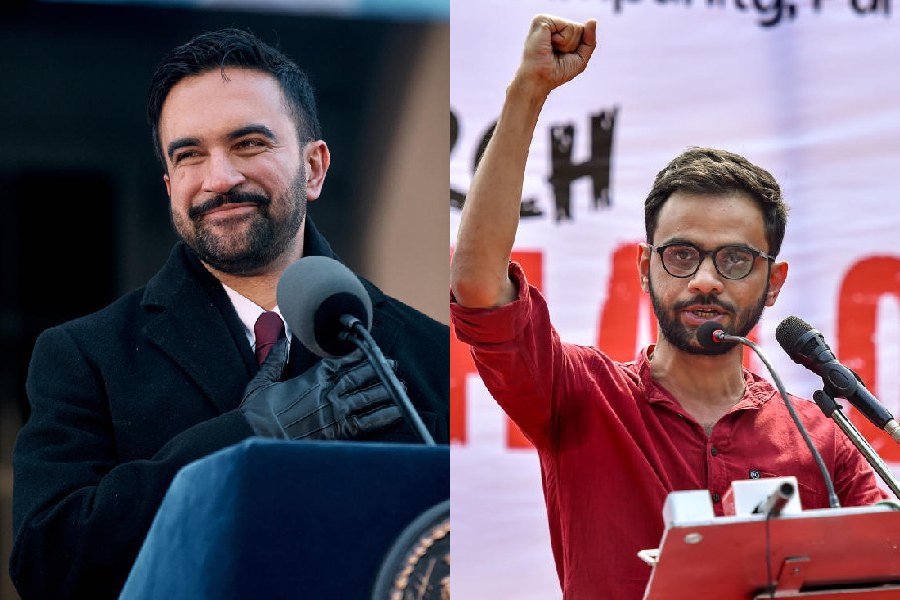The West has just imposed tough new rules on buying Russian oil. But as the measures come into force, India has been snapping up more Russian crude than ever before. Since the cap was imposed, one tanker a day has sailed out of Russian ports heading towards India’s west coast. That works out to about 1.6 million barrels per day (bpd). That’s up by almost 50 per cent from October and November, which were already record-breaking months.
“December will be the highest level (of Russian oil imports ever by India) and January might be even higher than December,” says Viktor Katona, Crude Analysis co-head at analytics firm Kpler. “The amount of actual buying that the Indian refiners are doing is just mind- boggling,” Katona said.
Traditionally, India has always bought its oil from giant producers like Iraq and Saudi Arabia which are only five-to-six sailing days away from India. But after the Russia-Ukraine war erupted, India became a huge buyer of Russian oil as it cashed in on discounts offered by sanctions-hit Moscow.
Industry estimates put India’s savings from importing discounted Russian oil at more than Rs 35,000 crore since Moscow invaded Ukraine in February.
India used to import a minuscule amount of Russian oil. Now, Russian crude makes up a quarter of India’s total oil imports, making the country our leading oil supplier, surpassing Iraq and Saudi Arabia.
India’s hugely stepped-up purchases of Russian oil has caused considerable unhappiness in Ukraine and in other European countries that are trying to slash Russia’s oil earnings in a bid to pressure Moscow to stop the war.
In a further step to squeeze Moscow’s crude earnings, the G7 countries, the EU and Australia have imposed a price cap of $60 on the global sales of Russian crude. To enforce this rule, they decreed on December 5 that ships carrying oil bought at higher prices won’t be able to get insurance, shipping and banking services from Western countries. Cargoes bought at prices below the cap are exempt from the shipping and services ban.
Russia has refused to sell its crude under the price cap mechanism and India has said it will not adhere to the sanctions on Russian crude. But US officials have said market pressure from the price cap could give Indian and Chinese refiners a significant bargaining chip to obtain even steeper discounts from Russia.
The price caps aim to cut Russia’s oil earnings. Simultaneously, though, the G7 countries don’t want to close off the flow of Russian oil totally because they fear this could lead to global shortages and send oil prices through the roof.
Giant discounts
Since the start of the war, Indian refiners, particularly the private sector players like Reliance and Nyara, have been buying ever-larger quantities of Russian oil. Russian oil giant Rosneft owns a 49 per cent stake in Nyara.
Midway through the year, when oil prices rocketed to $130, the Indian companies were getting giant discounts of around $30. They were then re-exporting the refined oil at global prices, mostly to southeast Asian countries.
Today, Brent crude, a benchmark of oil prices in Europe and Asia, is hovering around $75. Prices have slumped as Western economies have been hit by recession fears and so demand has fallen. “The actual discount that the Indian refiners are buying flagship Russian Urals crude is somewhere around $60 a barrel on delivered cargoes,” said Katona.
A huge volume of Russian oil now is competing in Asian markets with output from geographically closer Middle East suppliers so Russia may have to offer even deeper discounts to defray the high costs of the longer voyages required to deliver cargoes from the Baltic, analysts say.
India defends policy
India is now certainly the largest buyer of seaborne oil carried in tankers. China, by comparison, is only buying about 770,000 bpd of tanker oil. However, China also gets oil via two pipelines from Russia so it’s hard to tell if India is the biggest buyer of Russian oil or just behind the Chinese. Says Katona: “India has pretty much become the prime seaborne outlet for Russian oil.”
Buying oil from Russia initially landed India in the bad books of the G7 countries. But Oil Minister Hardeep Puri and Foreign Minister S. Jaishankar have been aggressively defending India’s purchases to the global media, insisting as a poor country it must give its own energy needs priority.
“It’s a sensible policy to go where we get the best deal in the interests of the Indian people and that is exactly what we are trying to do," Jaishankar told parliament last week.
The US has backed down in its opposition to India buying Russian crude. US Treasury Secretary Janet Yellen says India is free to keep buying oil from Russia as long as it doesn’t use Western shipping and financial services to transport it. She also says Washington hopes the price cap will give New Delhi greater leverage to push down the price of Russian crude further.
Russia assembling tankers
Russia has also been assembling a fleet of tankers to transport its oil around the world and most of the ships heading to India are thought to be coming on these vessels. One oil tanker, the Buena Vista, is currently in the Northa Sea heading towards Sikka in Jamnagar district. It’s expected to reach India in early January.
Adds Katona: “Russia-to-India flows never have been really impacted by the price cap because they use Russian ships, use Russian insurance, and the vessels are registered in India.
Russia on the weekend also offered India cooperation on leasing and building large capacity ships, according to a statement from the Russian embassy in New Delhi











